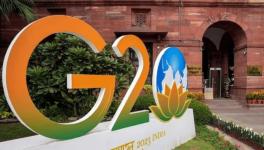Rafale Selected… Now Consolidation
The much awaited announcement of the winner in India’s medium multi-role combat aircraft (MMRCA) acquisition was finally made a fortnight ago, with the Rafale fighter from Dassault Aviation of France taking away the coveted deal.
Two aircraft, the Rafale and the Eurofighter from a European consortium, had earlier been down-selected from the six short-listed contenders after extensive evaluations and field trials. The final round was to be decided on the basis of total costs involving detailed calculations covering the estimated 40 years life of the aircraft including running costs, spares, maintenance and technical support. The Ministry of Defence (MoD) declaration in fact conveyed that the Dassault Rafale had emerged as L1 or the lowest cost bidder. The last remaining step now is the haggling over the final price and other details of the contract itself. Price is expected to go up considerably from the originally cited $10 billion, with some quarters suggesting ti could go as high as $15 billion or even $20 billion.
Given the huge value of the deal, and the global interest in it, we will of course examine the selection itself and the lessons learned from the long process. A fair amount of discussion, including in these columns, has already taken place on the technical merits or drawbacks of the contending aircraft. This article will therefore also locate the Rafale acquisition in, and take stock of, the entire raft of recent acquisitions and upgrades, and those on the anvil, that together make up the bulk of the modernization of the Indian Air Force as projected to meet security needs over the next three or more decades. And finally, we will also look at perhaps the most important aspect, but unfortunately the least studied or commented upon by analysts, namely how does India propose to absorb these new technologies and build indigenous capability on the back of these expensive acquisitions.
Rafale wins The nitty gritty of the complex evaluation process, field trials, lifetime costs and the comparative assessment of the MMRCA contenders are of course not available in the public domain. It is however known that the MoD has shared the salient aspects with the two finalists to underline the fairness and transparency of the process, and so as to ward off precisely the kind of recrimination and charges of bias or worse that emanated from the losing parties at least in the immediate aftermath of the announcement.
It is believed that the IAF was given far more primacy in the decision-making process than in most earlier deals. The aircraft performance and how the user saw it fitting into not only its strategic and tactical plans but also its fleet operations and maintenance would therefore have had substantial weightage. It is believed that around 640 parameters were used in the comparative evaluation. Value for money would undoubtedly have been a major consideration. But it can only be part of the contemporary mythology of tendering that in the final round, both contenders were on equal footing as to performance and compatibility with IAF fleet requirements, with only price being thereafter the only determining factor.
The MMRCA acquisition has been in the table for a long time and, understandably, the Air Force requirements have also undergone modification over this period, keeping in mind its evolving defence strategy, as well as the quite rapid obsolescence of large parts of its existing fleet and the various other acquisitions and upgrades undertaken during the interim. As noted in an earlier piece, the very definition of the aircraft to be acquired shifted from a lightweight fighter to a medium-weight aircraft (the second M in the MMRCA being a later addition) with substantial attack capability.
Both the contenders, as is the preference these days, are very capable both in aerial combat and in ground attack roles. However, the Eurofighter is believed to be optimized for air superiority whereas the Rafale, with somewhat longer range and ability to carry more armaments (including, the French are believed to have stressed, nuclear weapons), is thought to have better fitted the IAF’s evolving requirements. While some of the 6 short-listed aircraft were probably knocked out very early for being too light but continued in the tender more as a formality, the Rafale was once thought to be too heavy.
Several commentators consider the Eurofighter to be among the best contemporary aerial combat aircraft, excluding the US F-22 Raptor which is a class apart but too advanced for foreseeable threats and far too expensive even for the US which has discontinued further procurement. On the other hand, India already has the Sukhoi SU-30 MkI whose performance in the Indradhanush exercises against all US and European fighters must surely put it there among the best. India has recently ordered a further 64 Su-30 MkIs over and above its earlier order of 140 aircraft most of which are to be made in India, so clearly that slot is taken. If India wanted more aerial fighters, it would make far greater sense to simply buy more Su-30s than to go in for new Eurofighters. Besides, the Rafale also has a ready carrier-based version.
India’s attack fleet though is quite severely depleted with the imminent phasing away of the several decades old Jaguars from Britain. India has recently decided to upgrade its Mirage 2000s which performed very well in the Himalayan cold mountainous terrain during the Kargil conflict. The Rafale with its longer range and modern technology provides excellent complementarity with the Mirage fleet, further augmented by the fact that both aircraft are from Dassault of France which is also executing the Mirage upgrade.
On the other hand, the Eurofighter would have been a completely new type of aircraft for the IAF, requiring all-new support systems. There may also have been some questions about Its AESA radar which is still under development.
But price must have been a very major factor indeed. Some sources have said that the Eurofighter was a good 20 percent more expensive than the Rafale in life-cycle terms. Nothing suggests that the Eurofighter has so much better performance or capabilities as to outweigh the cost disadvantage.
France is also said to have offered, and guaranteed its government’s backing for, significant transfer of technology to India. This has two dimensions, both very important: first, extent of indigenization and control especially over vital technologies in times of conflict, and second cost. It is quite likely that the Rafale scored heavily over the Eurofighter on both counts.
Reliability of Partners And thereby hangs quite a story, too involved to go into much detail here, but some broad pointers would help readers grasp the bigger picture.
Britain and to a lesser extent Germany have made much of what they perceive to be “extraneous” geo-strategic considerations and an Indian tilt towards France because of the latter’s clout as a Security Council member whereas a deal with an amorphous European consortium would not have given India similar diplomatic dividends. If that had been the main criteria, the US contractors should have won the deal hands down. With the US too complaining bitterly about Indian ‘ingratitude,” in effect wanting India to use extraneous considerations to decide on a crucial military acquisition, Britain too conveyed it expected India to be swayed by the aid Britain was giving. Most of this can be put down to sour grapes, but the issue of “extraneous factors” deserves some consideration.
In military aviation today, and to a smaller degree in the civilian sector too, US companies such as Boeing and Lockheed Martin are too big and powerful for most rivals from other countries. In Europe, the response has been through consortia such as the Airbus manufacturer EADS and project-specific consortia such as with the Eurofighter which brought together British, German, Spanish and Italian firms. In the civil sector Airbus is commercially on a par with the American giant Boeing and has solidified its reputation as a reliable supplier, also encouraging sub-contracting partnerships in other countries, and provider of support services. The same obviously cannot be said of the more temporary consortia for military aircraft.
Today Russia and France are the two remaining non-US nationally-based military aviation industries covering design and manufacture of airframes, engines, armaments, avionics and systems integration, with Britain having increasingly turned towards the consortium approach. The British government was deeply hurt that the Eurofighter lost out but then the Eurofighter is not British.
Further, while India has had a long history of collaboration with Russia, France and Britain in military aviation, it appears that some lessons have distilled out from accumulated experience. Despite the recent strategic warming of defence relations between India and the US, India and especially its armed forces appear be still extremely doubtful about US reliability as a supplier while its possible support role especially during times of conflict, which is of course crucial for armed services, is entirely untested. On the other hand, Russian reliability has been time-tested even though its reputation for reliability has suffered of late mostly due to declining capacity in post-Soviet Russia and to commercial disputes arising from both nations redefining their relationship in the new context.
Less well-known to the Indian public, India and France have had a long and fruitful collaborative relationship in fighter aircraft and helicopters, going back to the Dassault ouragan in the 1950s. France was the only Western country not to impose sanctions after Pokhran-II while the US withdrawal of support from crucial elements of the Light Combat Aircraft (LCA) set back the developmental efforts by several years and continues to deeply rankle the military and the defence R&D establishment. France was also very forthcoming during the Kargil conflict with spares and support including an urgently needed integration of Russian and Israeli avionics with the Mirage 2000 to enable it to play the vital role it did in precision targeting of infiltration infrastructure in intractable positions in the heights.
Britain of course has been an equally long-term partner with an enviable role in collaborations for the redoubtable Gnat fighter of the ‘60s through the Jaguar and now the hawk trainers. Yet, for all this deep partnership, the British have been prone to cause problems, withholding or delaying assistance for commercial or other reasons. It took considerable persuasion by India to resolve several difficulties with the Hawk Trainers especially as regards technology transfer for license manufacture in India.
In terms of long-term defence collaboration, therefore, it seems the IAF has decided to throw in its lot other with France and Russia for mainline fighters while going with manufacturers from Britain and even the US for support and specialized-role aircraft required in smaller numbers.
If so, with a main combat aircraft fleet comprising the Mirage 2000 and Rafale from France, the Sukhoi-30 MkI and the futuristic 5th generation fighter to be co-developed with Russia and inducted in the mid or late 2020s, apart from the indigenous LCA, it would seem that India has all that it needs for the coming three to four decades. After the expensive Rafale acquisition, and considerably more expenditure to come on the LCA, new Sukhois, Mirage upgrades and the Russo-Indian G5 fighter, it is time India drew the line.
Whither industrial capability? As argued vigorously in these columns, these acquisitions and the technology transfer leveraged through the offsets clause, should be purposively and strategically conceptualized, planned and executed in a manner such as to ensure Indian firms acquire self-reliant autonomous capability not only in manufacture but also in design-development for the next generation. There is however no sign that this is happening. Offsets will indeed come about, sub-contracted works would be taken up by both state sector and new private sector entrants into the defence industry. But how much of this will translate into solid and lasting capability?
There is much to be said for the much greater thoroughness and transparency that has characterized the MMRCA acquisition than in earlier contracts. But there is far less transparency in the matter of offsets. Which firms will obtain how much offsets work for the MMRCA contract? Who will decide this and how? Will these firms have the requisite experience, past track record and future vision for a strategic integration with India’s high-tech engineering capability and infrastructure? Or will we see, as in the telecom scam, real-estate companies setting up greenfield fabrication units just to make some quick money and then turn to other more profitable ventures? There is much scope for cronyism in the offsets mechanism. The political leadership in India needs to ensure that these expensive and high technology acquisitions do not simply yield costly machines dependent on equally costly external support services but are converted into long-term investments in indigenous capability and industrial strength in advanced technology.
Get the latest reports & analysis with people's perspective on Protests, movements & deep analytical videos, discussions of the current affairs in your Telegram app. Subscribe to NewsClick's Telegram channel & get Real-Time updates on stories, as they get published on our website.
























